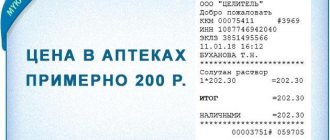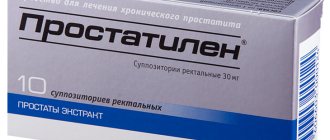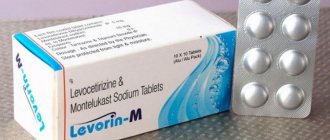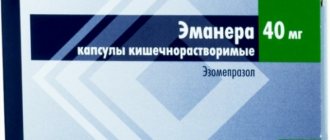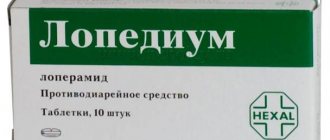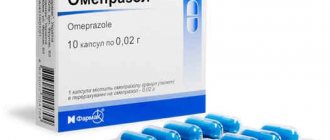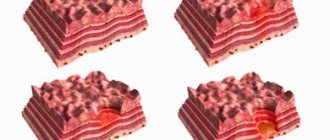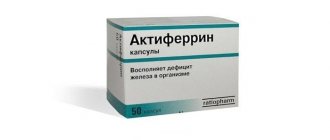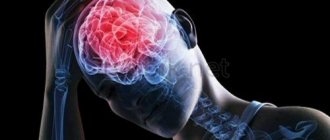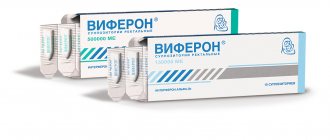The drug Lincomycin
According to the pharmacological classification, Lincomycin is an antibacterial agent. This allows it to kill anaerobic bacteria that cause disease and impair the healing process. The antibiotic Lincomycin belongs to the lincosamide class and is available in several forms. The active ingredient in it is lincomycin hydrochloride.
Composition and release form
The drug can be purchased in the format of capsules (tablets), ointment (cream) and solution for injection. Detailed composition:
| Lincomycin capsules | Solution | Ointment | |
| Description | Capsules with white body and yellow cap, white powder inside | Transparent colorless liquid with a characteristic faint odor | White-yellowish ointment |
| Concentration of lincomycin hydrochloride | 250 mg per 1 piece. | 300 mg per 1 ml | 2 g per 100 g |
| Excipients of the composition | Calcium stearate, colloidal silica, microcrystalline cellulose, gelatin, titanium dioxide | Disodium edetate, sodium hydroxide solution, water | Zinc oxide, paraffin, potato starch, petroleum jelly |
| Packaging format | 6, 10 or 20 capsules | 1 or 2 ml per ampoule, 5 or 10 ampoules per cardboard box with ampoule scarifier | 10 or 15 g in aluminum tubes |
Pharmacodynamics and pharmacokinetics
In therapeutic doses, the antibiotic acts bacteriostatically; in higher doses it has a bactericidal effect. Inhibits the protein synthesis of bacteria in the cell, is active against staphylococci, streptococci, clostridium bacteria, and mycoplasmas. The overwhelming majority of gram-negative bacteria, fungi, viruses and protozoan microorganisms are resistant to it.
When taken orally, it is absorbed from the stomach and intestinal tract by 35%; food intake slows down the rate and extent of absorption. The active substance is widely distributed in bone tissue and fluids and penetrates the placental barrier. Metabolism occurs in the liver, the half-life is five hours. It is excreted from the body by the kidneys and intestines with urine, bile and feces.
What is Lincomycin for?
Instructions for use indicate the following indications for use of the drug in patients:
- severe diseases caused by microorganisms sensitive to the drug;
- sepsis, osteomyelitis, septic endocarditis;
- respiratory diseases: diphtheria, tonsillitis, bronchitis, tracheitis, laryngitis;
- inflammation of the kneecap;
- pneumonia, lung abscess, wound infections;
- infections caused by strains of staphylococcus or other gram-positive bacteria resistant to penicillin;
- pyoderma, furunculosis, erysipelas for ointment.
Lincomycin in dentistry
Dentists call Lincomycin one of the best remedies for the treatment of inflammatory and purulent processes, because it quickly stops the destructive process in teeth and helps tissues heal. The active substance accumulates in the tissues of teeth and gums. Indications for use in dentistry are the following diseases:
- periodontitis;
- ulcerative gingivitis;
- inflammation of periodontal tissues;
- purulent infections, abscesses;
- suppuration in periodontal pockets;
- stomatitis;
- osteomyelitis;
- periodontitis.
A special form of Lincomycin, Dental, has been released especially for dentists. It is a film impregnated with medicine, which is glued to parts of the oral cavity for an antibacterial effect. It lasts a long time and can be used by patients independently. Lincomycin injections are used in the treatment of restoration of destroyed bone tissue, ointment to relieve bleeding and inflammation of the gums (at night after brushing your teeth). The ointment can also be used to treat herpes and lubricate tooth areas while wearing braces.
Indications for use
Lincomycin is prescribed for the treatment of the following infectious and inflammatory diseases caused by microorganisms sensitive to the action of the active substance (primarily streptococci and staphylococci, especially microorganisms that are resistant to penicillins, as well as in the presence of an allergy to penicillins):
- Otitis;
- Subacute septic endocarditis;
- Sepsis;
- Postoperative purulent complications;
- Chronic pneumonia;
- Wound infections;
- Empyema of the pleura;
- Lung abscess;
- Pleurisy;
- Purulent arthritis;
- Osteomyelitis (chronic and acute).
The drug is also indicated for infections of soft tissues and skin, including furunculosis, pyoderma, erysipelas and phlegmon.
Directions for use and dosage
According to the instructions, the method of use and dosage depend on the chosen format of the medicine and the severity of the disease. The medication is prescribed by a doctor, and the course and regimen are prescribed. Tablet dosage regimen: 500 mg three times a day. The dosage can be increased to 500 mg in four doses, the course lasts 1-2 weeks. The dose is adjusted depending on age and the presence of renal or hepatic impairment.
Articles on the topic
- Tablets for normalizing blood pressure - a list of medications with dosage and mechanism of action
- Josamycin - instructions for use and side effects, mechanism of action, contraindications and analogues
- Ceftazidime - instructions for use and reviews
Lincomycin in ampoules
According to the instructions, the ampoule solution is prescribed to children from one month old; younger than this age, the drug is not used. The drug is administered intravenously in the following dosage:
- under the age of 14 years – 10-20 mg/kg every 8-12 hours;
- adults - intravenous Lincomycin 600 mg in 250 ml of physiological solution of sodium chloride or glucose, frequency - 2-3 times a day; for severe infections, injections of Lincomycin 600 mg 1-2 times a day are given intramuscularly.
Pills
Tablets are intended for oral administration. They are consumed orally 1-2 hours before meals or 2-3 hours after. It is necessary to take Lincomycin capsules with plenty of clean water. Frequency of application – 2-3 times/day with an interval of 8-12 hours. Instructions for use contain the following dosage recommendations:
- children aged 3-14 years – 30-60 mg/kg/day;
- adults – single dose 500 mg, maximum daily dose is 1-1.5 g, frequency 3-4 times/day;
- angina is treated for 10 days; when treating the disease, you can combine taking pills and intravenous administration of a solution to eliminate the effects of microorganisms on the heart and lungs.
Ointment
According to the instructions, Lincomycin ointment is applied externally. It is applied directly to the affected area in a thin layer for skin diseases, repeating the procedure two or three times a day. This form of medication can be used with caution in children older than one month due to the increased risk of allergic dermatitis; for adults, use for the treatment of skin infections is carried out as usual.
"Lincomycin" - solution for injection. Instructions for use
Once in the body, the antibiotic tends to accumulate in joints, soft tissues, bones and bronchopulmonary fluid. This is one of the advantages of this drug. Injections are prescribed to the patient in case of the following pathologies:
- pleurisy;
- lung abscess;
- purulent otitis;
- lower respiratory tract infections;
- purulent lesions of soft tissues and skin;
- infection of bone tissue;
- microbial damage to joints.
Often, for severe skin pathologies, Lincomycin in solution is prescribed. The instructions state that its use is justified in the presence of carbuncles or boils. Usually, doctors for these diseases recommend penicillin medications, but when they do not have an effect, they switch to lincomycin hydrochloride.
The drug is most often used in dentistry. Its popularity is due to its ability to penetrate and accumulate in bone tissue, thereby achieving the maximum effect of treatment. In dental practice, an antibiotic may be prescribed in the following cases:
- tooth extraction that caused an inflammatory or purulent process;
- inflammation of the gums;
- osteomyelitis;
- prevention of complications after surgery.
special instructions
The instructions for use indicate special instructions that must be followed when using the drug:
- for patients suffering from impaired liver and kidney function, the single dose is reduced by half or by a third, while the interval between use is increased;
- with the development of pseudomembranous colitis, Lincomycin is canceled and replaced with Vancomycin or Bacitracin;
- Medication therapy is carried out with caution if patients have allergic reactions, bronchial asthma, colitis, or a history of gastrointestinal diseases;
- not used to treat meningitis.
Drug interactions
The drug may have an effect on other medications. Such interactions are described in the instructions for use:
- penicillins, cephalosporins, chloramphenicol, erythromycin can cause antimicrobial antagonism;
- aminoglycosides lead to synergistic action;
- agents for inhalation anesthesia and anesthesia, muscle relaxants enhance neuromuscular blockade until apnea develops;
- antidiarrheal drugs reduce effectiveness;
- the medication is incompatible with ampicillin, barbiturates, theophylline, calcium gluconate, heparin, magnesium sulfate;
- Kanamycin and novobiocin cannot be combined in one injection syringe or dropper.
Side effects
According to the instructions, the drug can cause the following side effects that will cause discomfort to the patient:
- nausea, diarrhea, stomatitis, glossitis;
- reversible leukopenia (decreased white blood cells);
- urticaria, allergic reactions, dermatitis;
- candidiasis, phlebitis;
- intestinal dysbiosis, which can lead to erosive damage to its walls;
- impaired coordination of movements;
- decreased blood pressure, dizziness, weakness, relaxation of skeletal muscles.
Contraindications
The instructions indicate the following contraindications, in the presence of which the use of the drug is strictly prohibited due to unwanted side effects and harm to health:
- severe renal and liver dysfunction;
- pregnancy, breastfeeding;
- hypersensitivity to components, clindamycin;
- children up to a month for solution and ointment, up to three years for tablets, up to five years for dental use;
- fungal diseases (the drug is not effective against fungal pathogens), fungal or viral tonsillitis.
Analogs
Based on the active substance of the composition and the therapeutic effect provided, the following analogs of the drug are distinguished, produced in the form of tablets, solution and ointment by domestic and foreign pharmaceutical companies:
- Ecolink;
- Clindamycin;
- Clindacil;
- Clindamycin-Norton;
- Dalatsin;
- Lincocin;
- Clindahexal;
- Pulxiprone;
- Linkocel.
Lincomycin and its properties
This drug is available in several forms:
- pills;
- capsules;
- ointment;
- ampoules for injections;
- self-absorbable patches.
The main component of the drug is the main active ingredient lincomycin. The antibiotic also contains other excipients. It is an antimicrobial agent belonging to the lincosamide group. The drug has a bacteriostatic effect against a wide range of bacteria. If the medication is used in large doses, it can exhibit bactericidal properties .
This drug exhibits a mechanism of action in inhibiting the process of protein synthesis in the microbial cell. The antibiotic is effective against many bacterial microorganisms, for example, Shigella, which causes bacillary dysentery. However, for viral fungal diseases it is ineffective and even harmful, since it is intended against bactericidal infections.
Price
The cost of the drug depends on what form of medicine the doctor prescribed to the patient, the number of ampoules or tablets in the package and the trade markup. Approximate prices in Moscow are shown in the table:
| Variety | Internet prices, rubles | Pharmacy prices, rubles |
| Ampoules 10 pcs. 1 ml each | 40 | 50 |
| Ampoules 5 pcs. 2 ml each | 43 | 50 |
| Tablets 10 pcs. | 60 | 67 |
| Tablets 20 pcs. | 90 | 99 |
| Ointment 10 g | 27 | 34 |
| Ointment 15 g | 39 | 45 |
Application in dentistry
In dental practice, Lincomycin is often prescribed. The instructions contain complete information about the dosage and treatment regimen:
- The standard treatment regimen involves administering 2 ml of the drug three times a day.
- The total duration of therapy is from 5 to 7 days.
- For periodontitis, the course of treatment is 10 days.
- If a diagnosis of osteomyelitis is made, therapy can last up to 20 days.
In the field of dentistry, this antibiotic is used only for intramuscular administration. Sometimes Lincomycin is injected into the gum, but in this case there should be no signs of inflammation.
